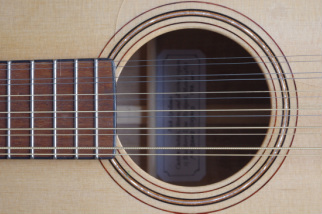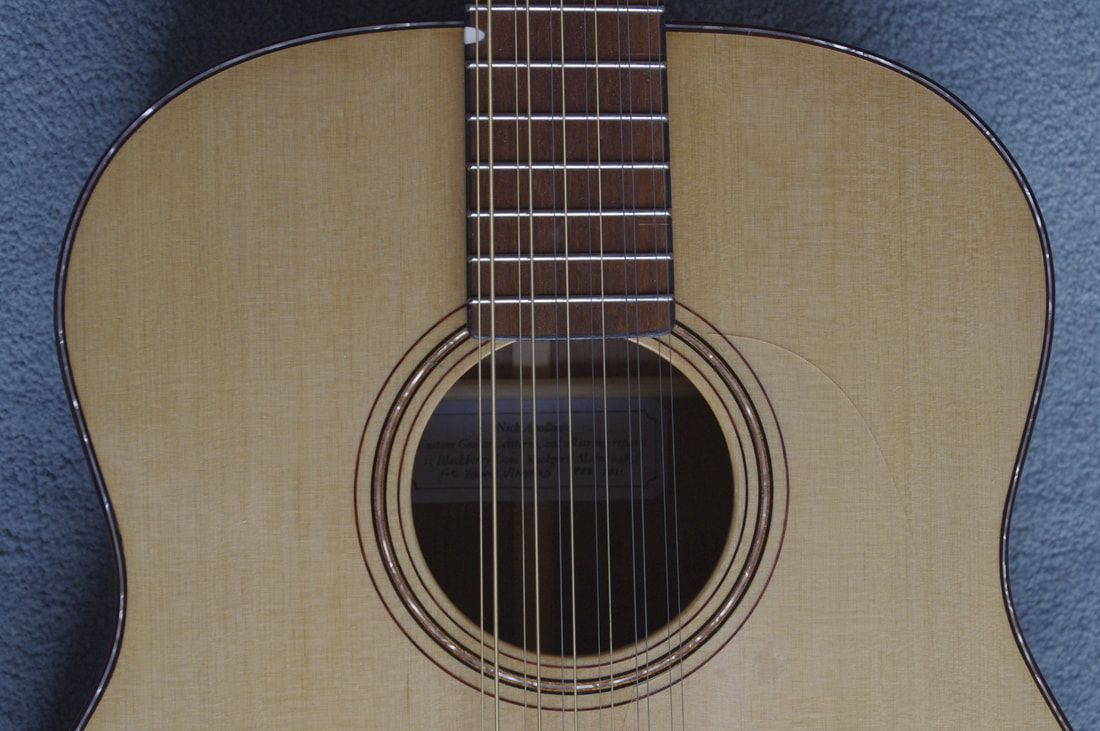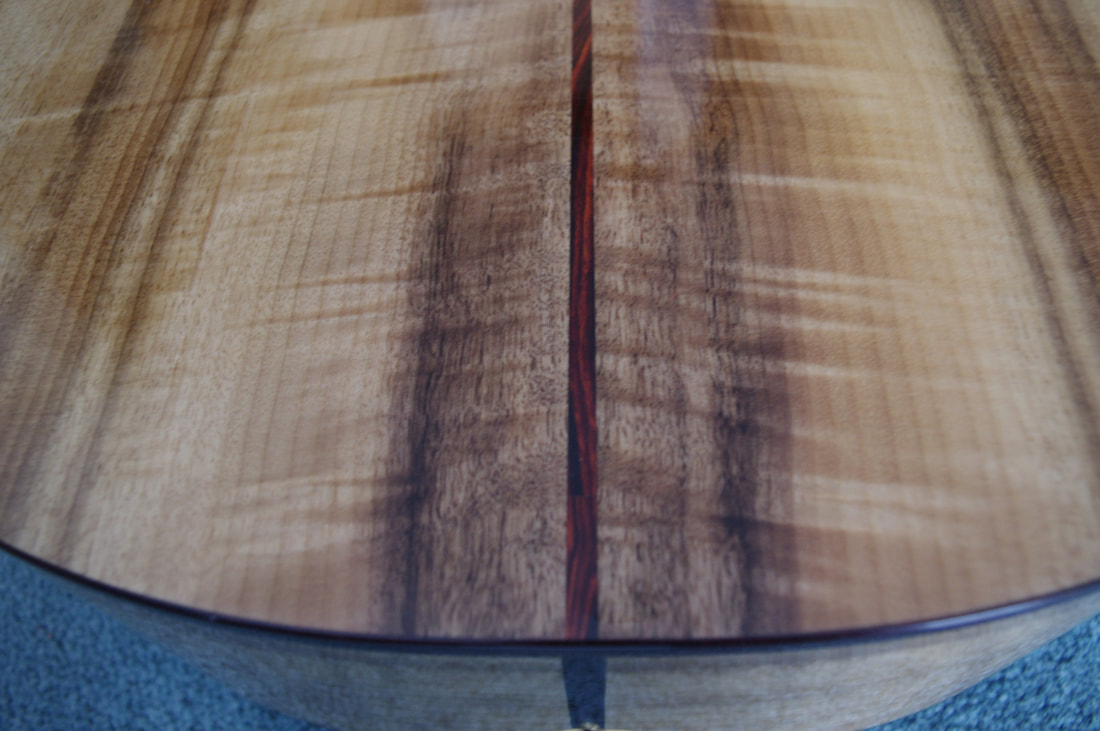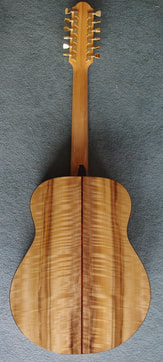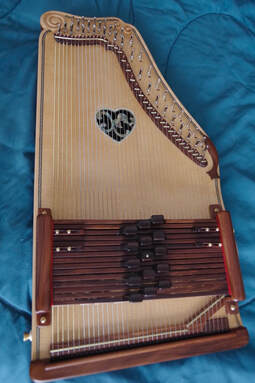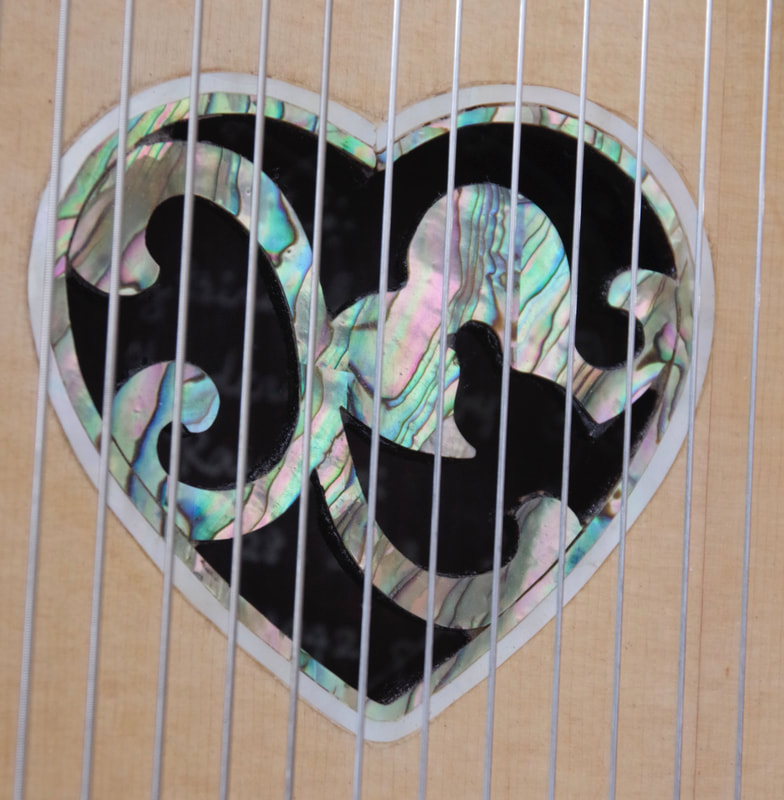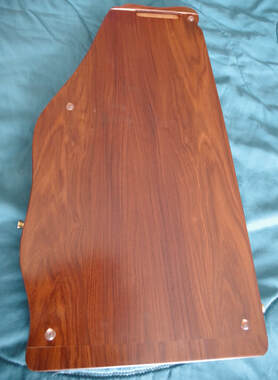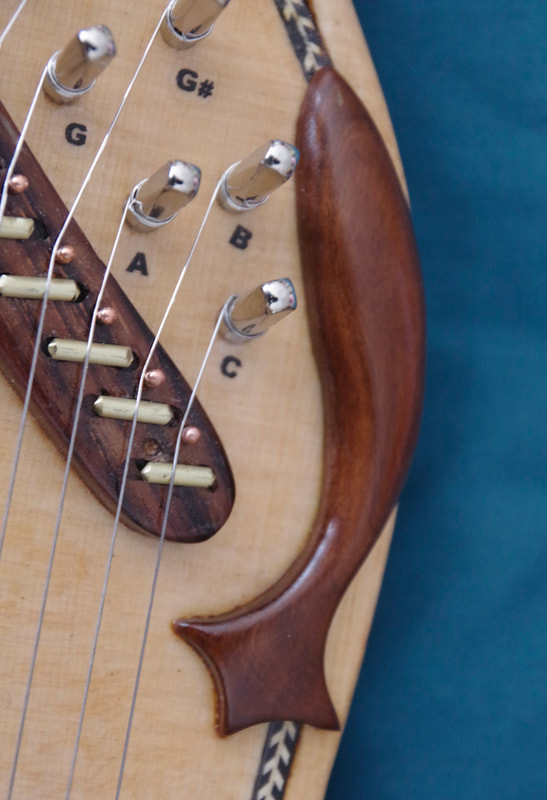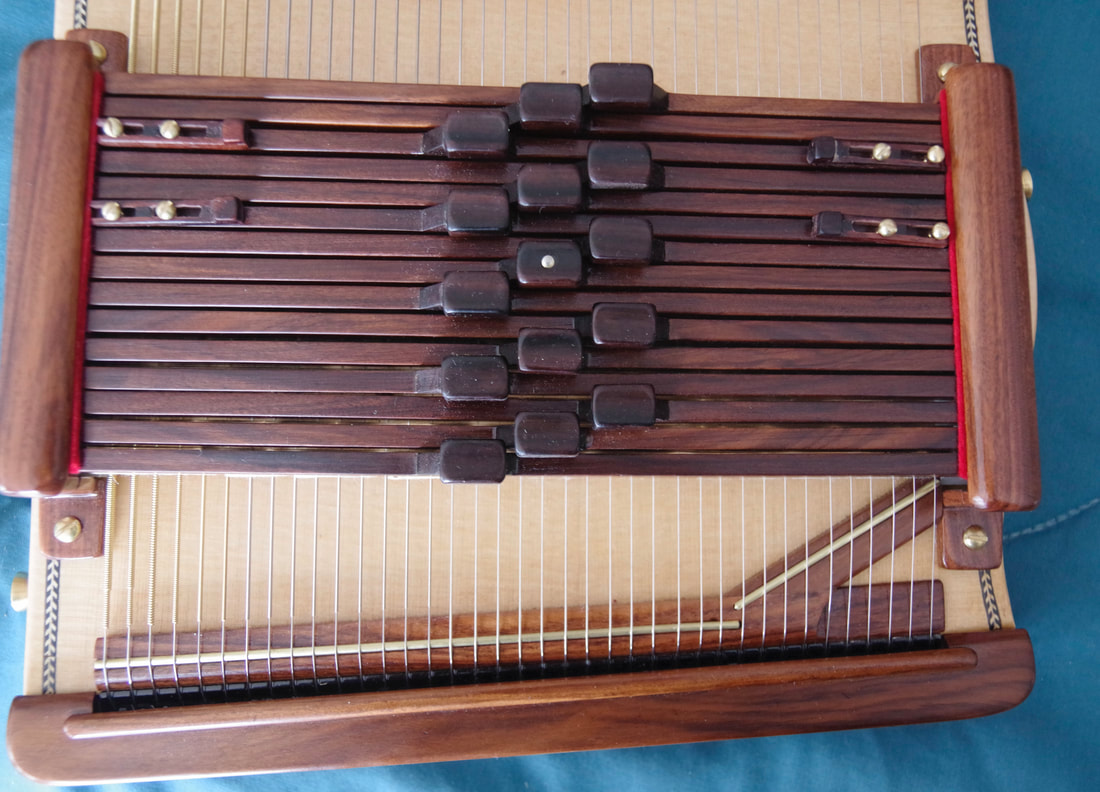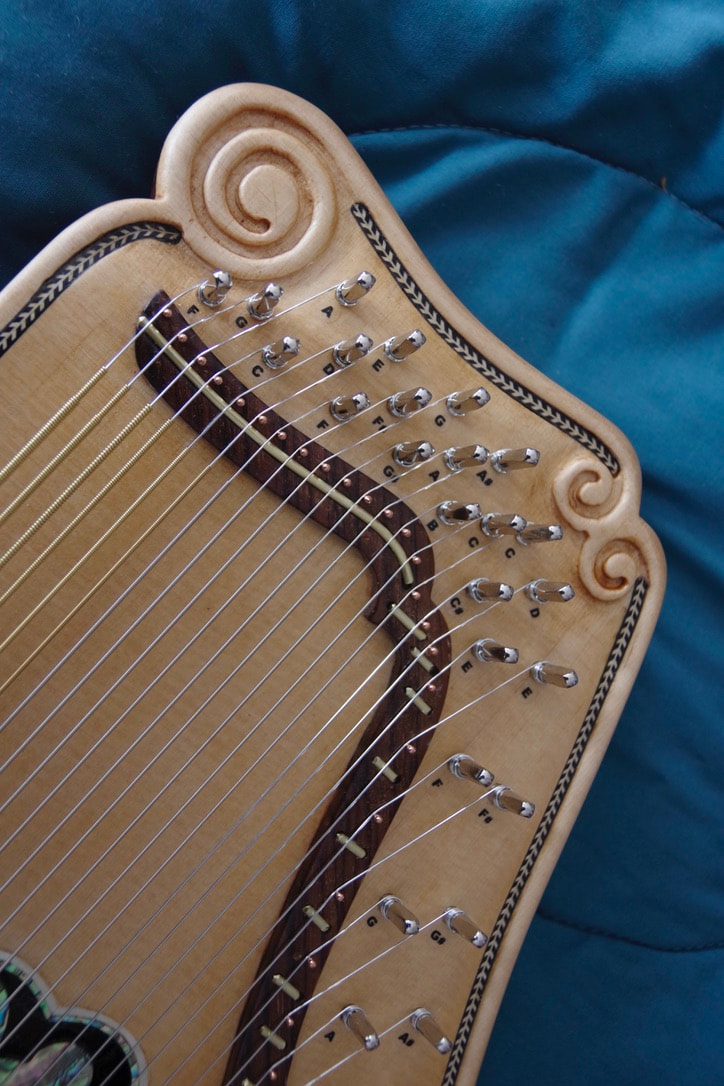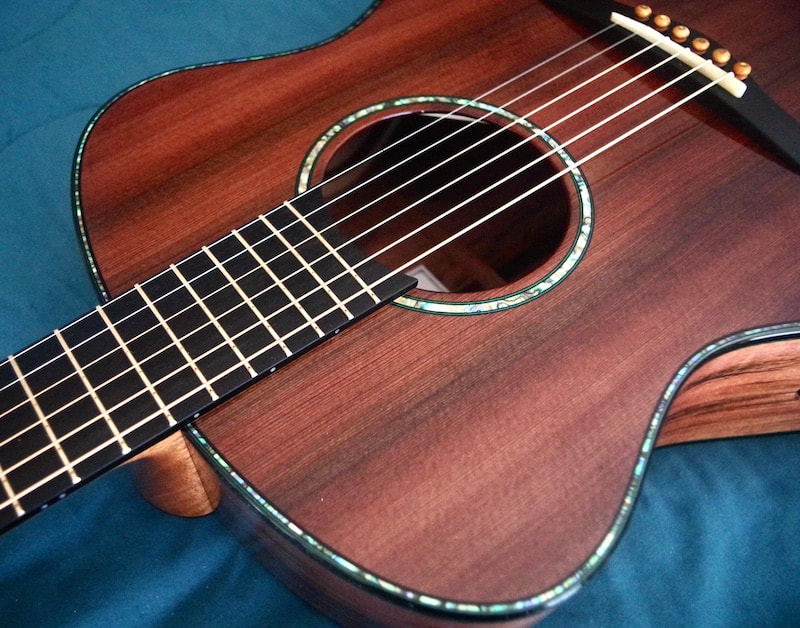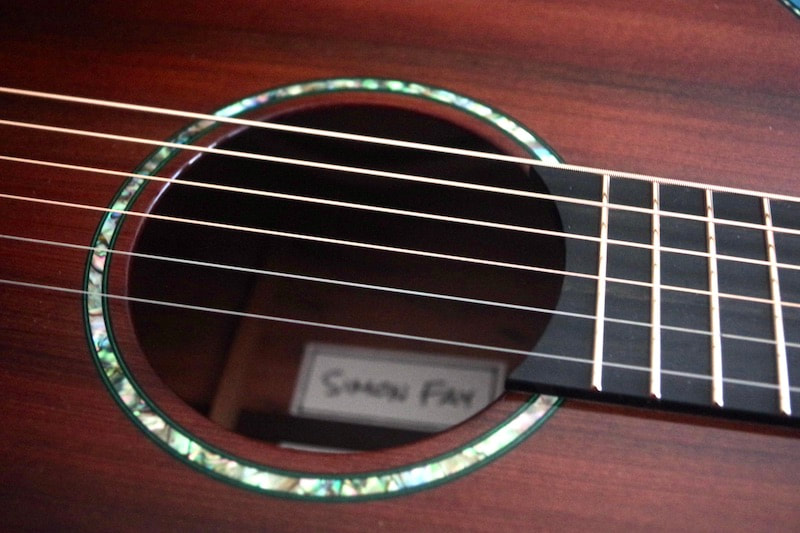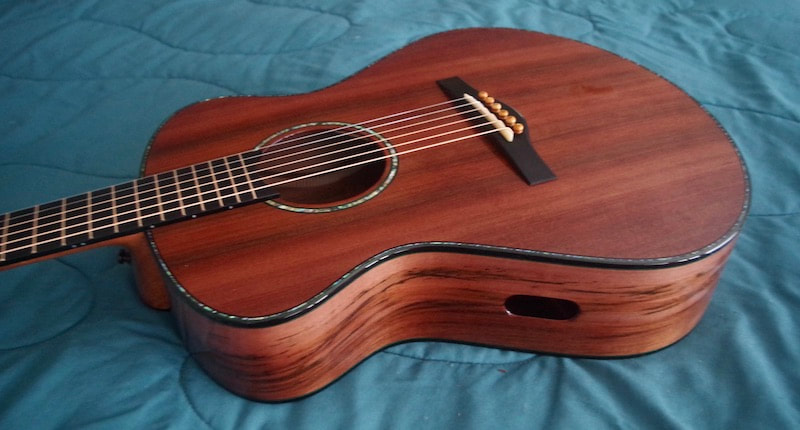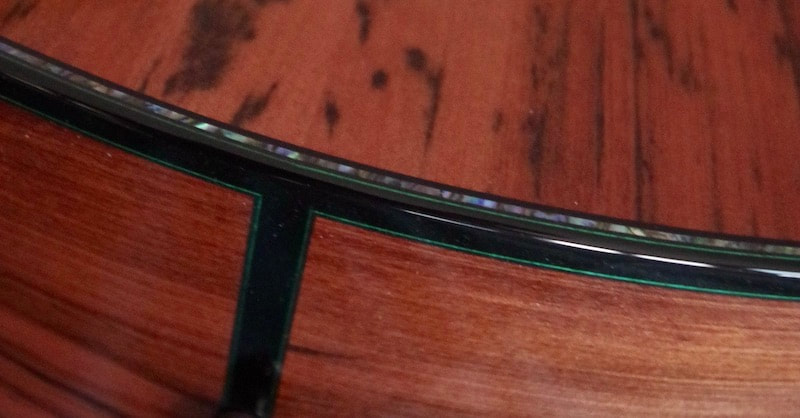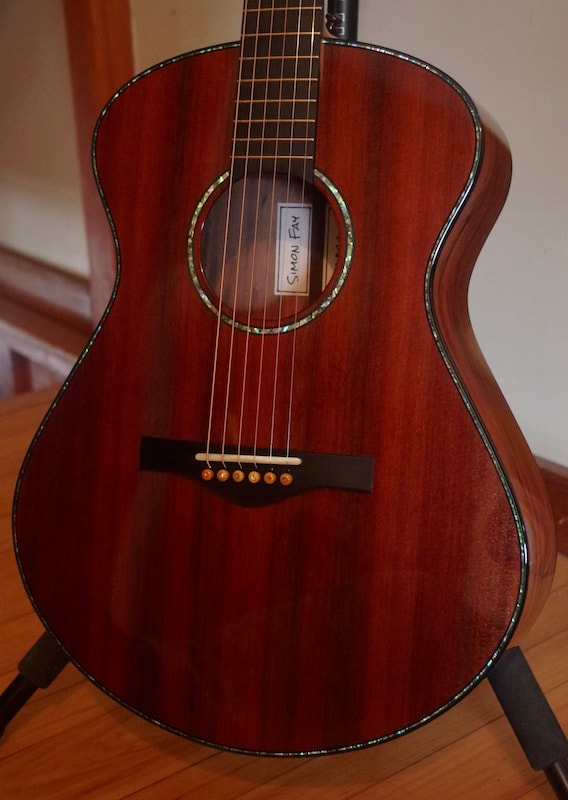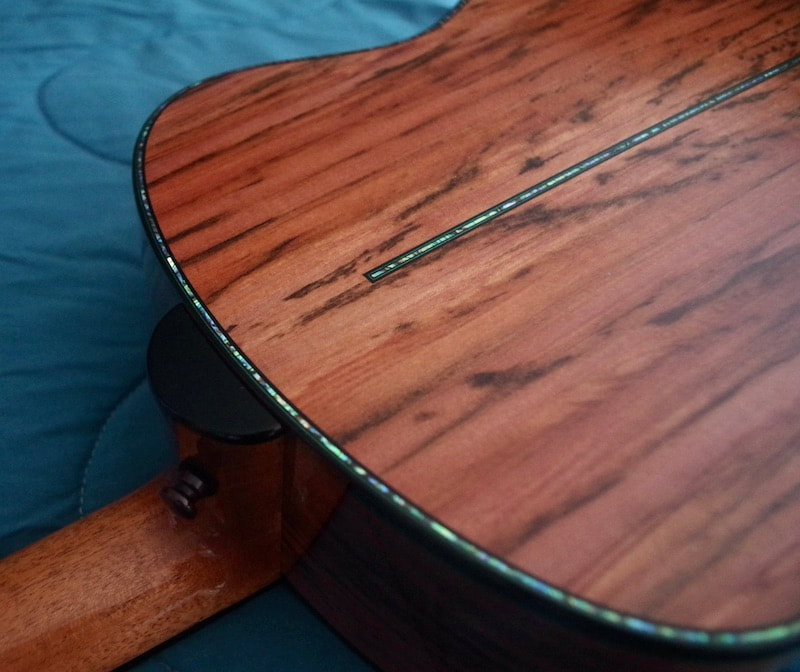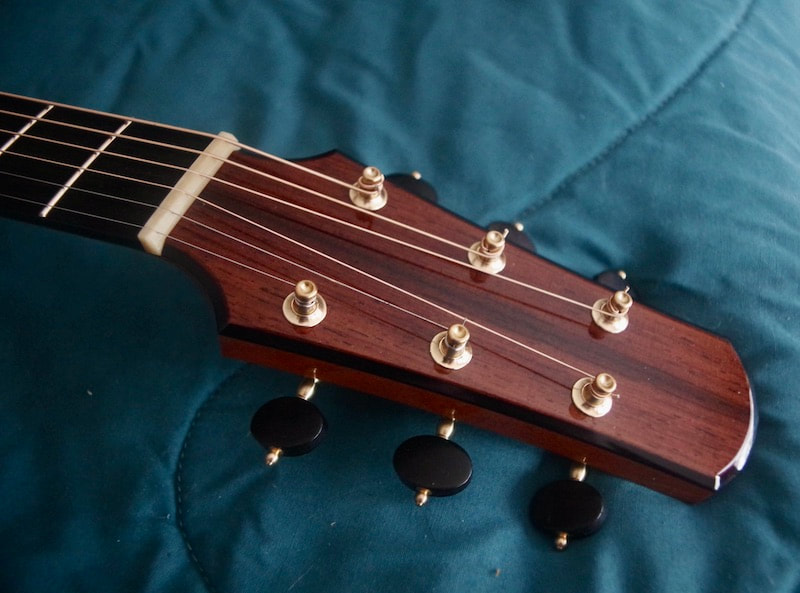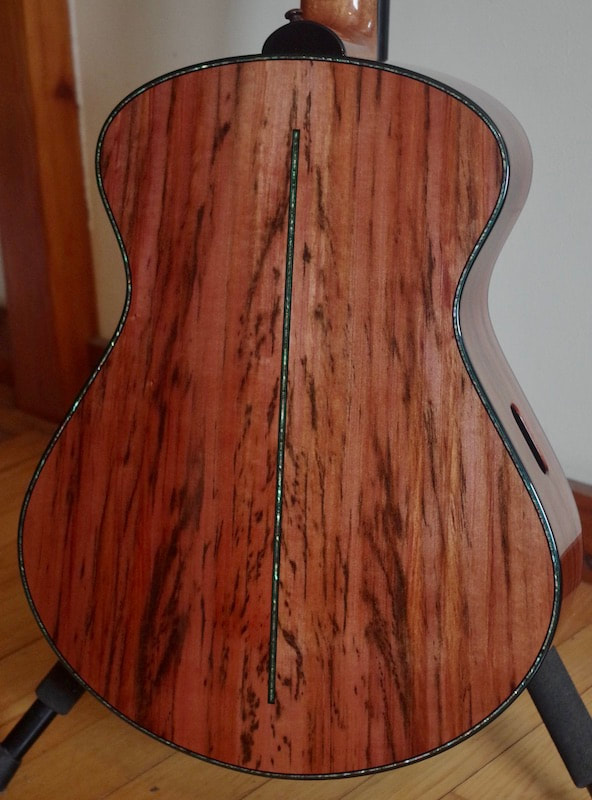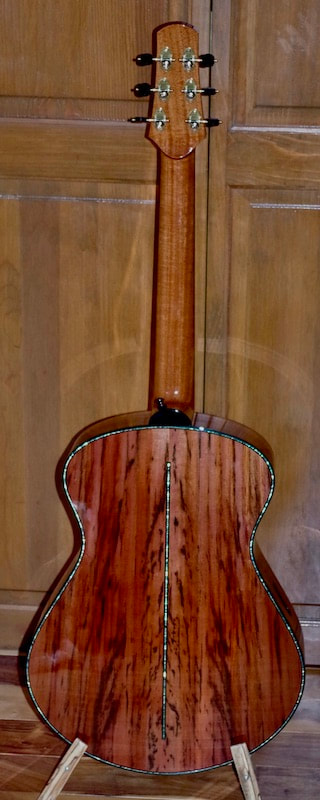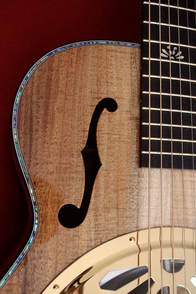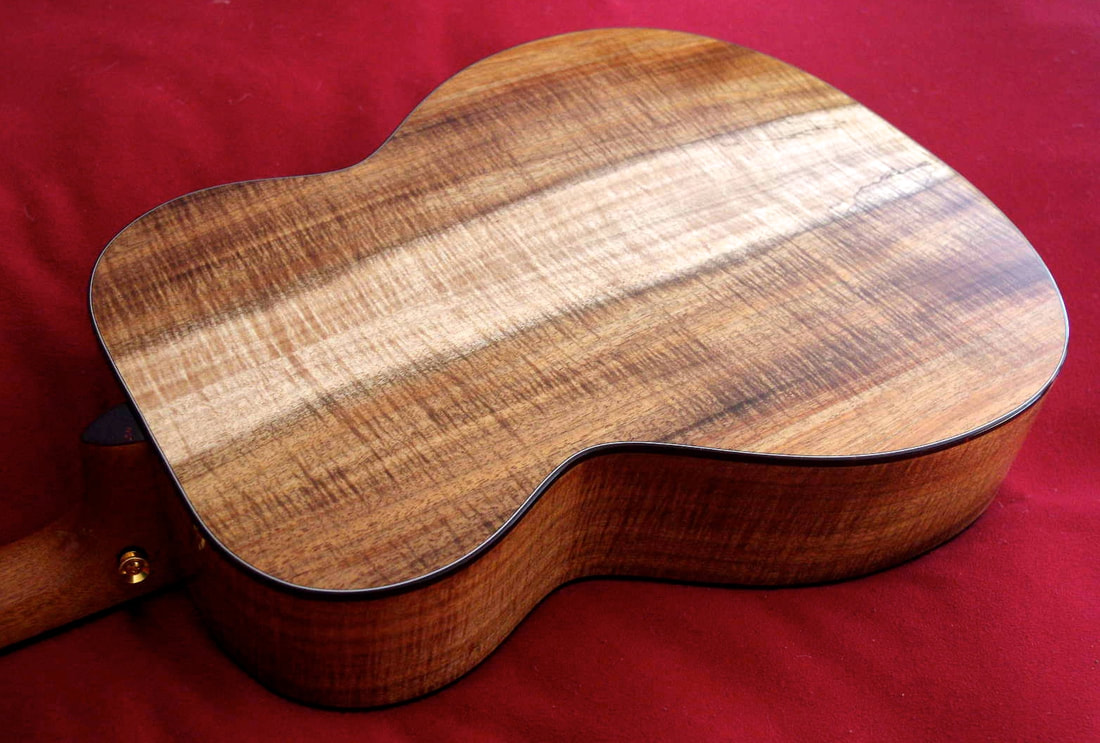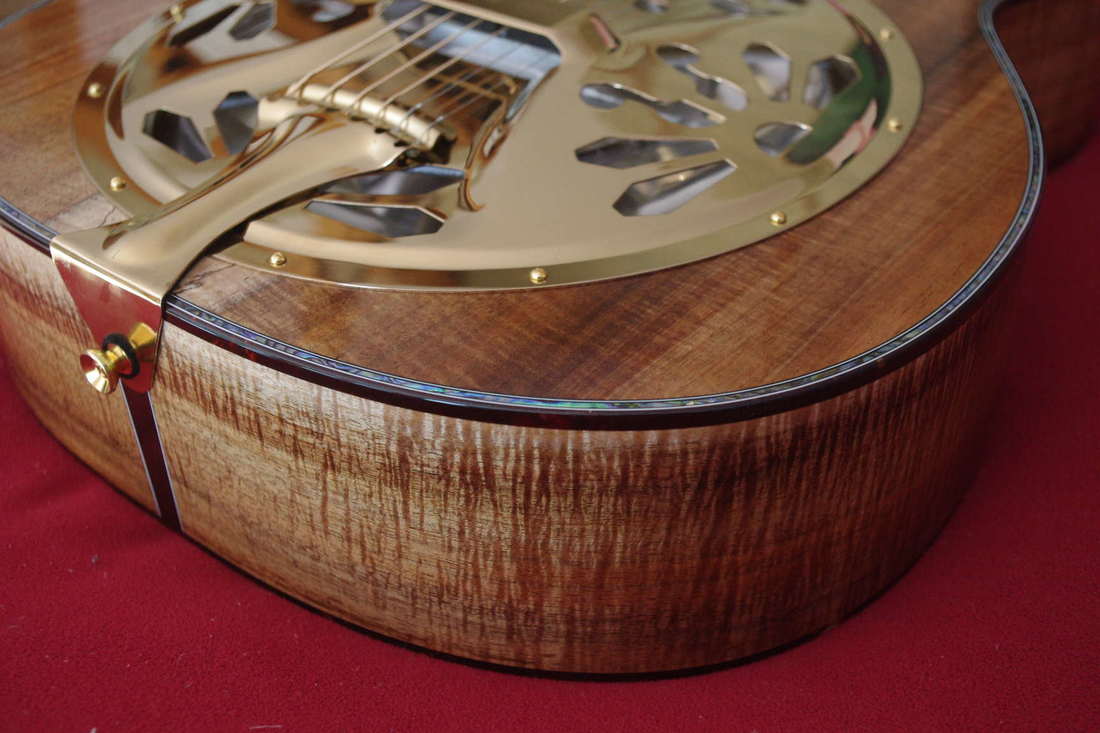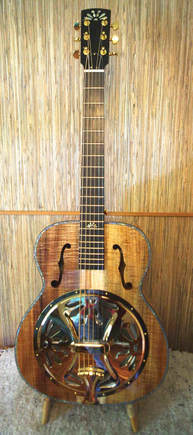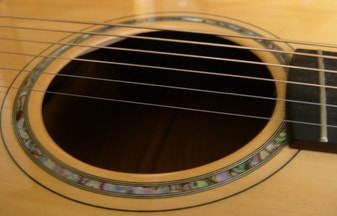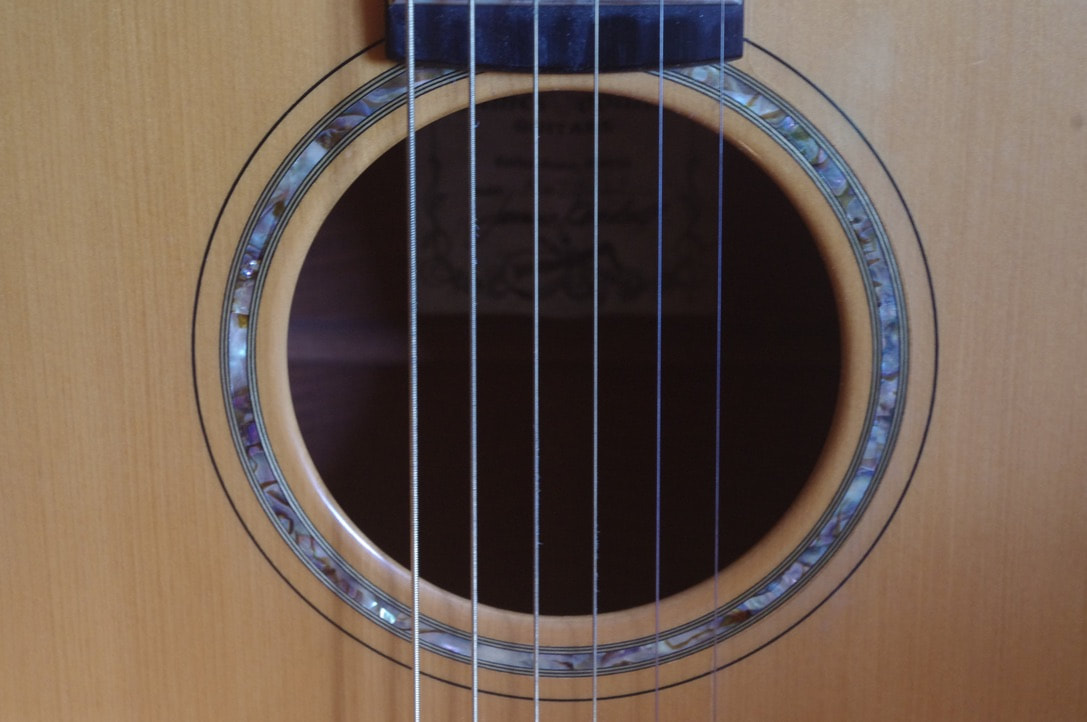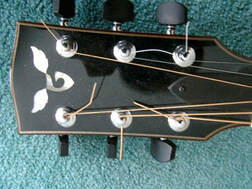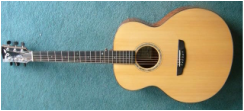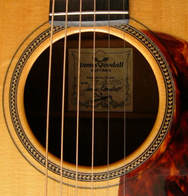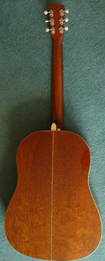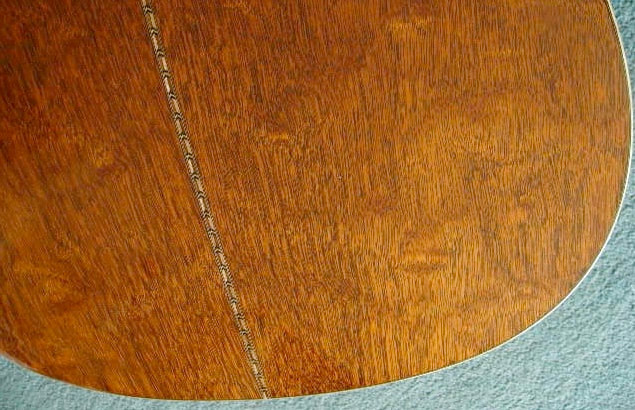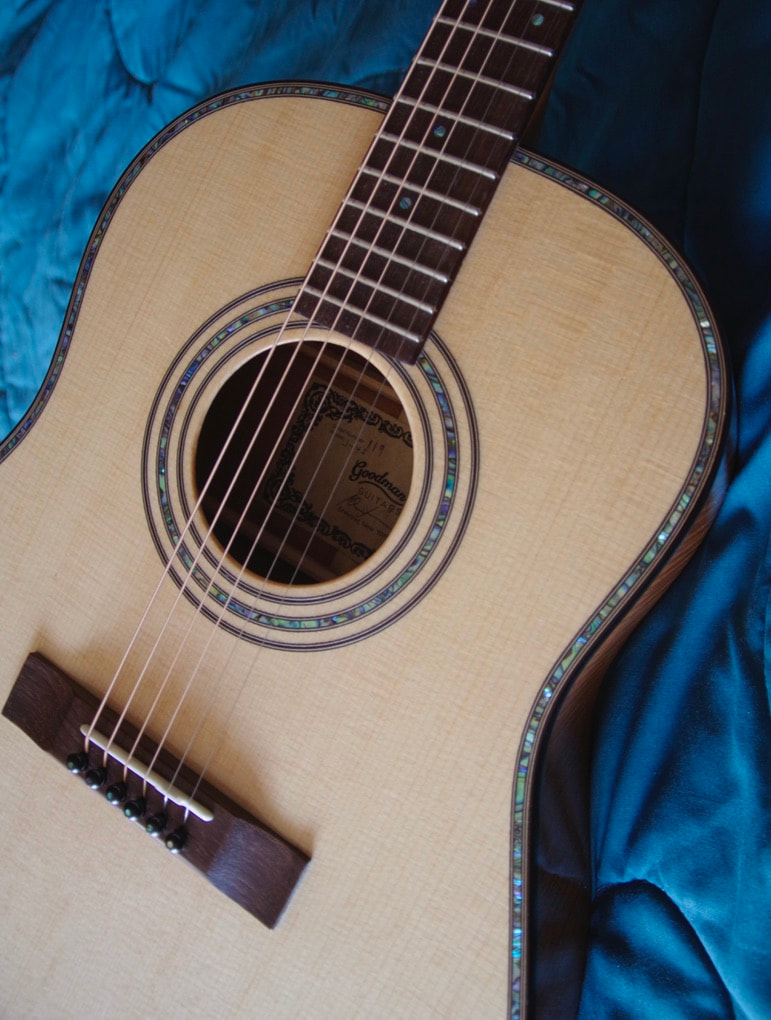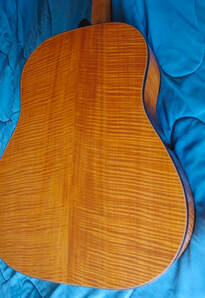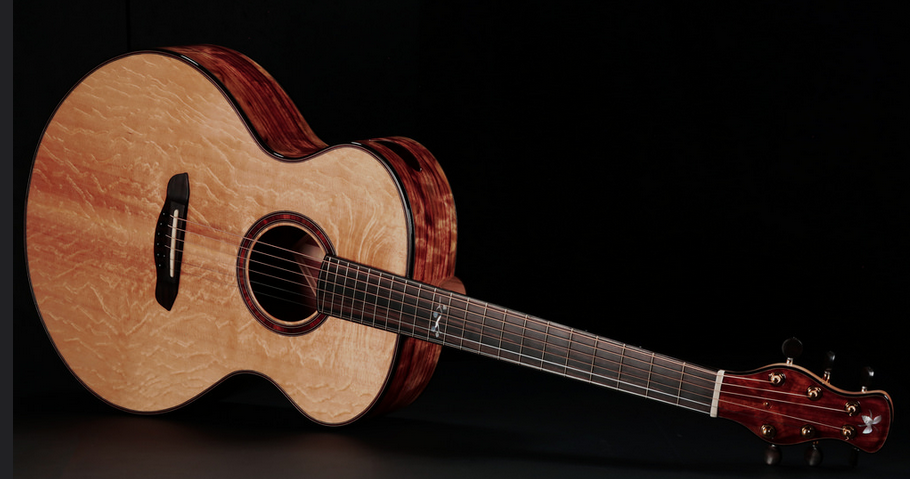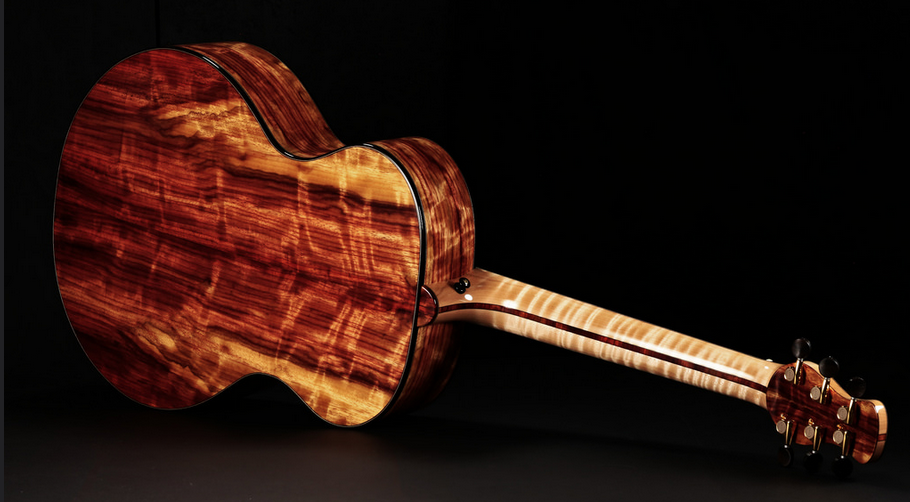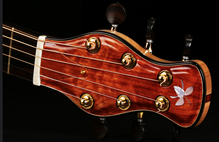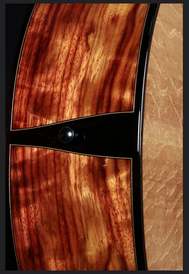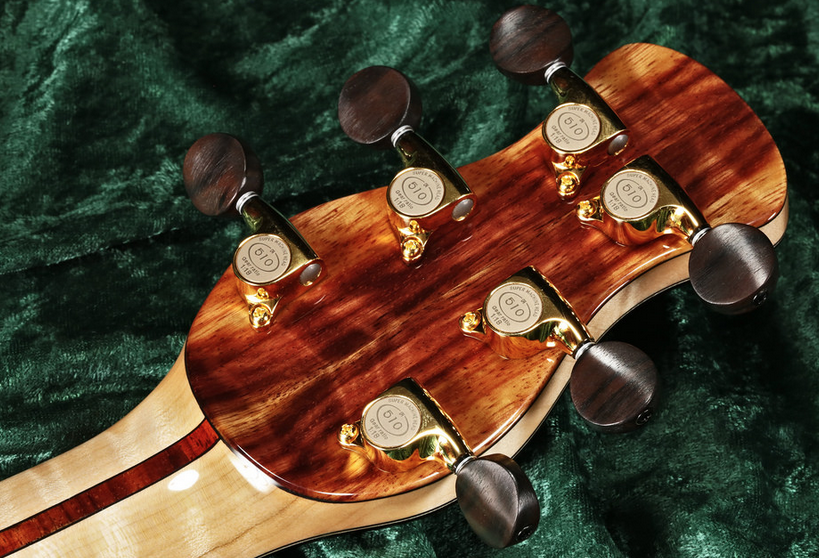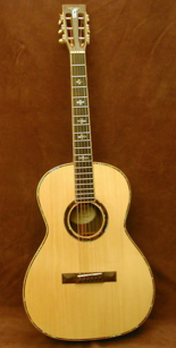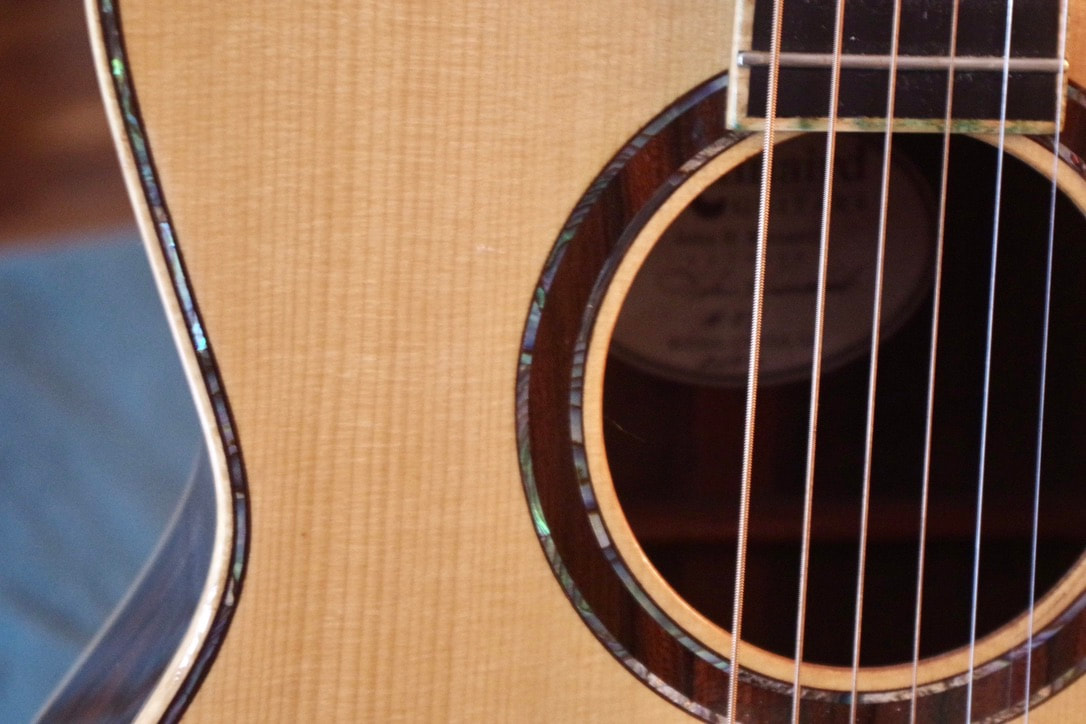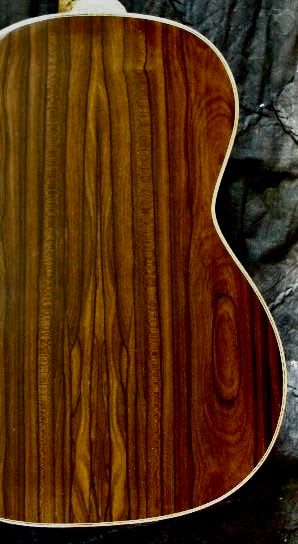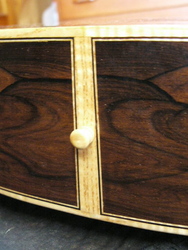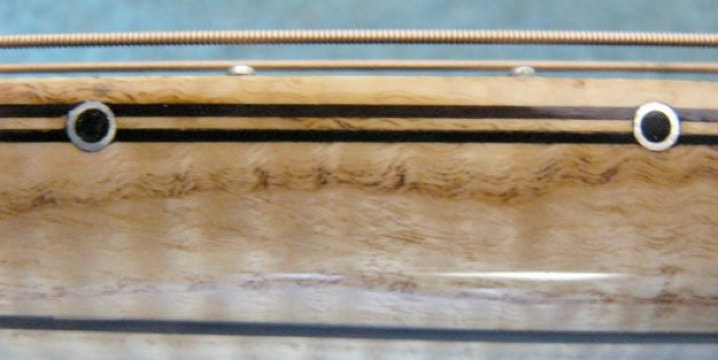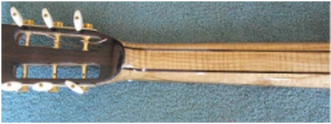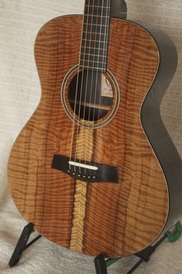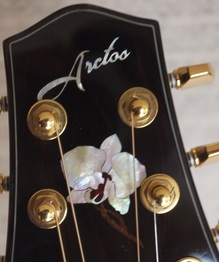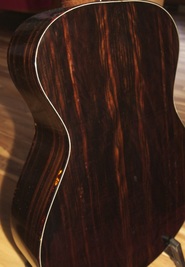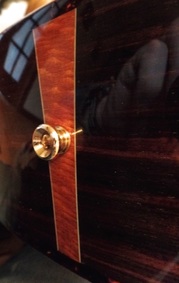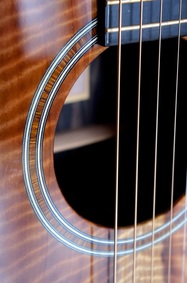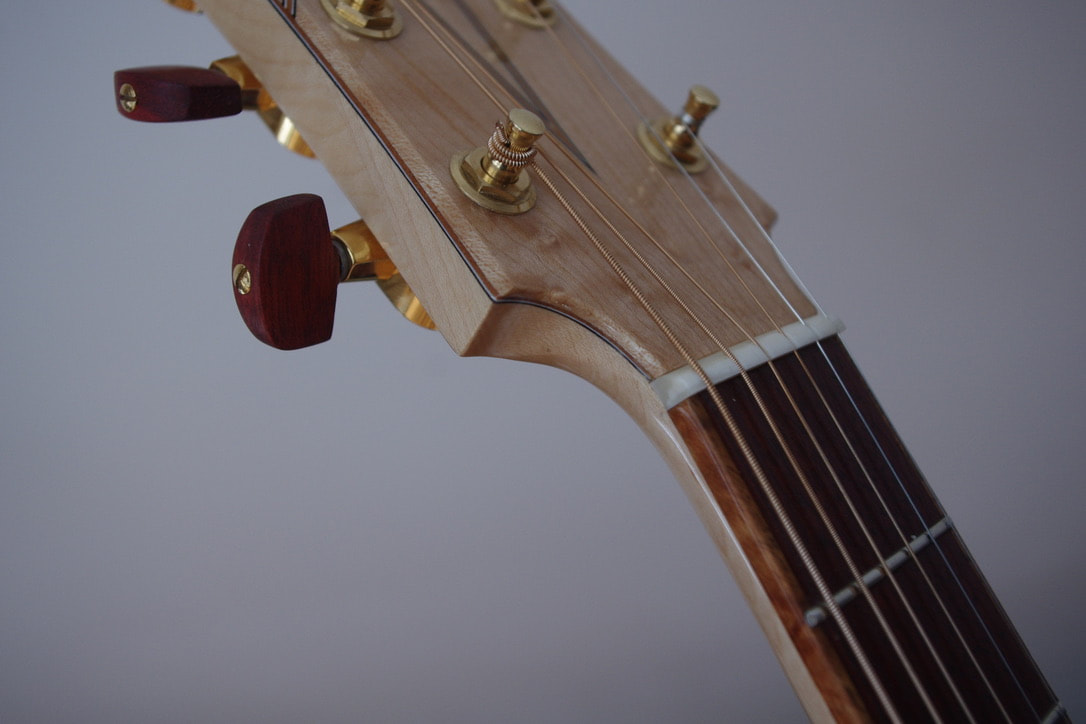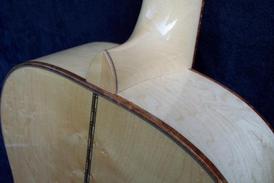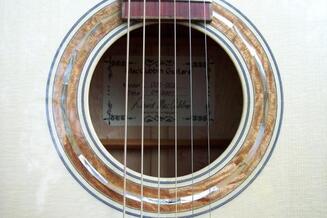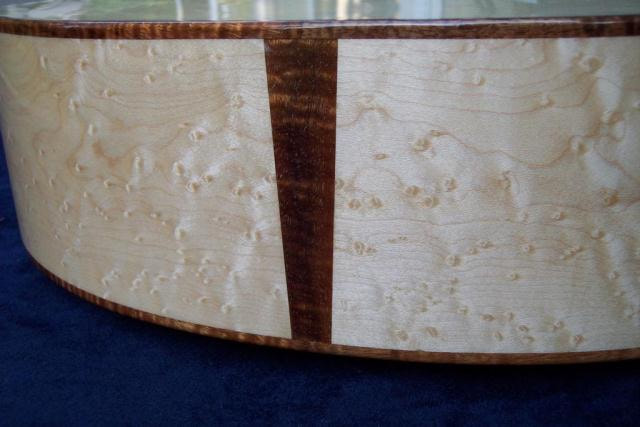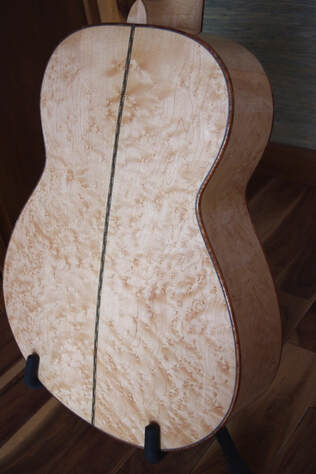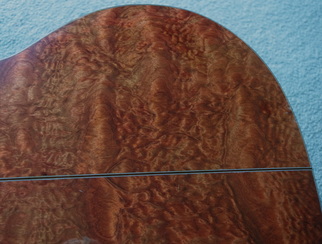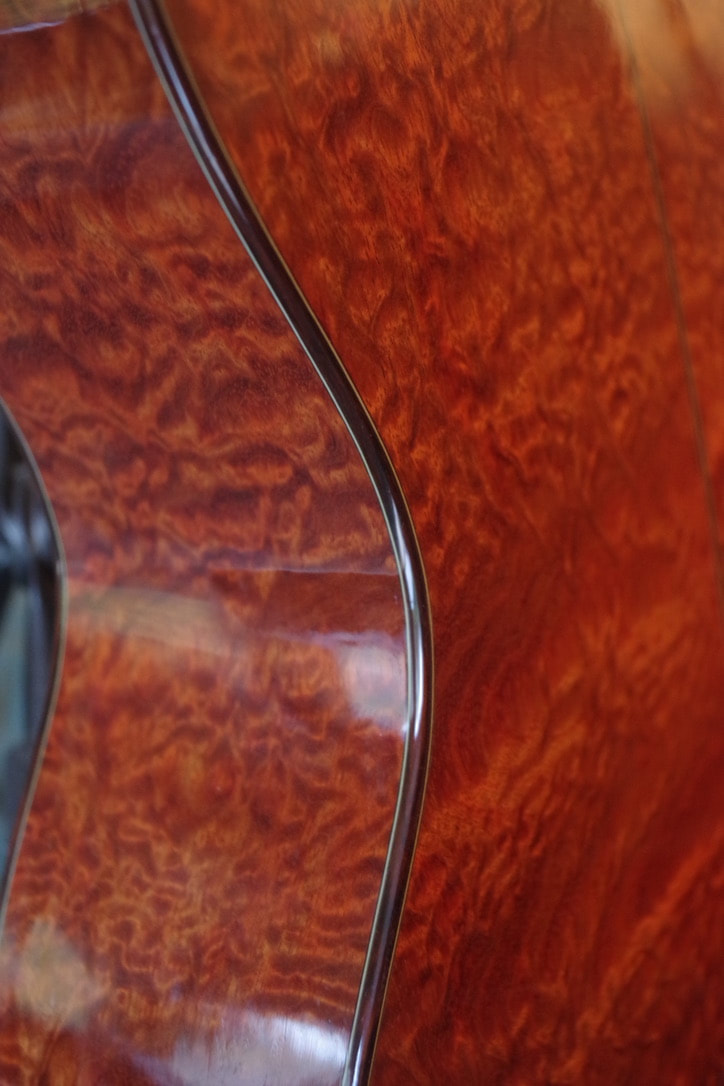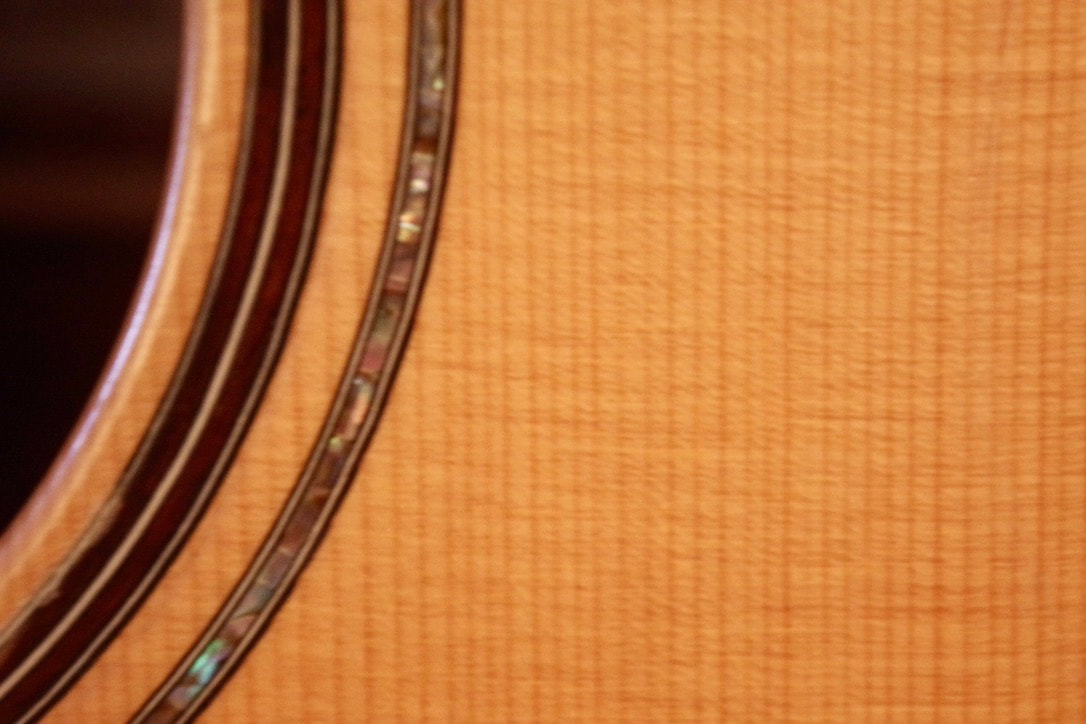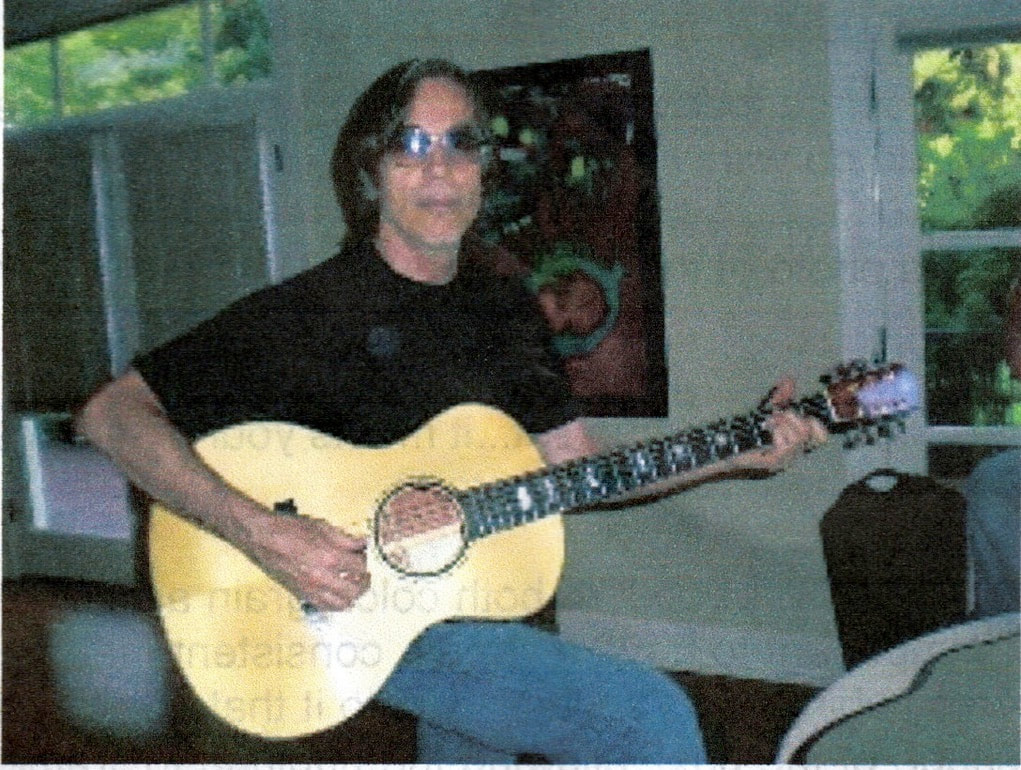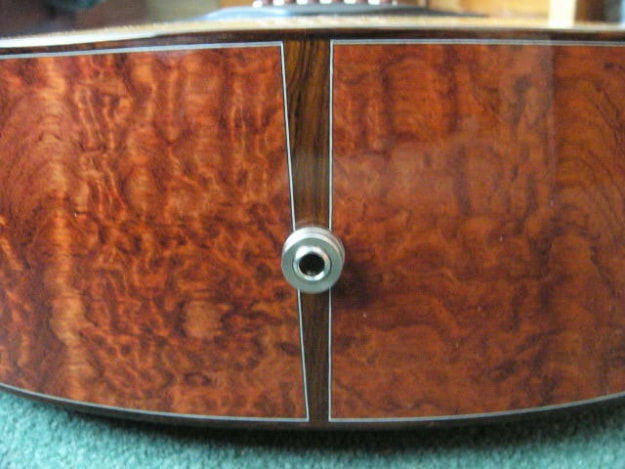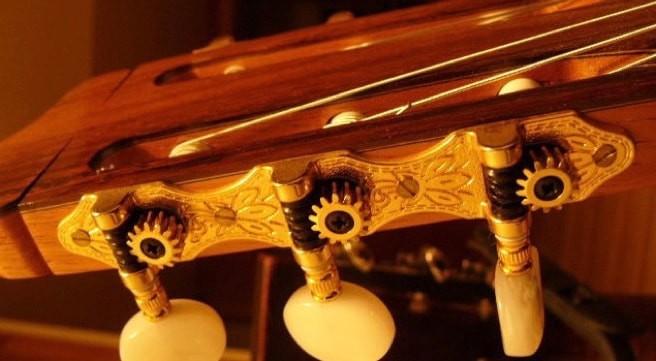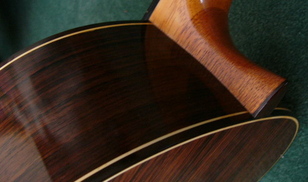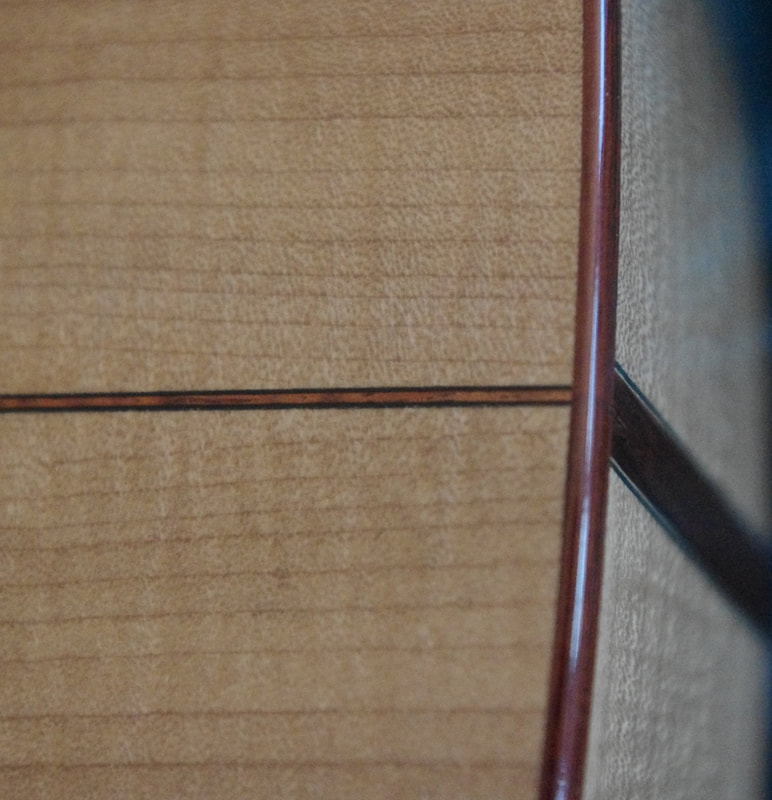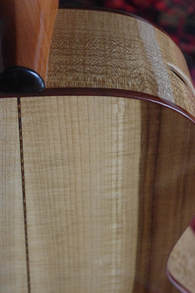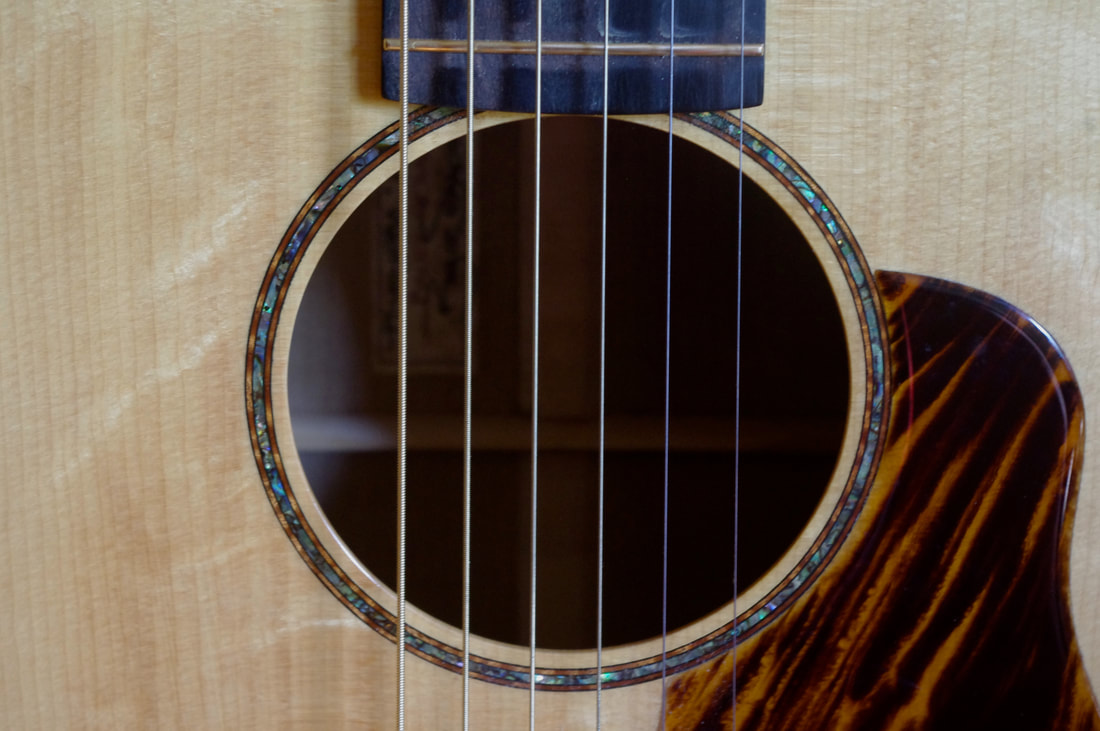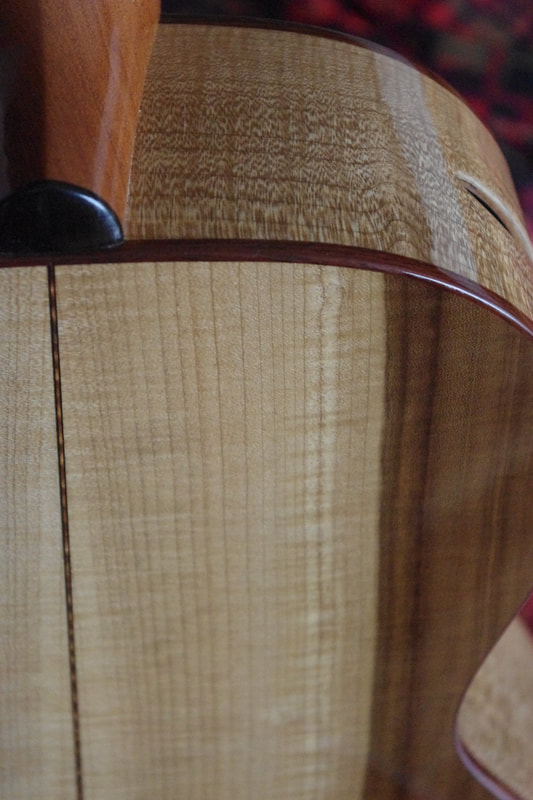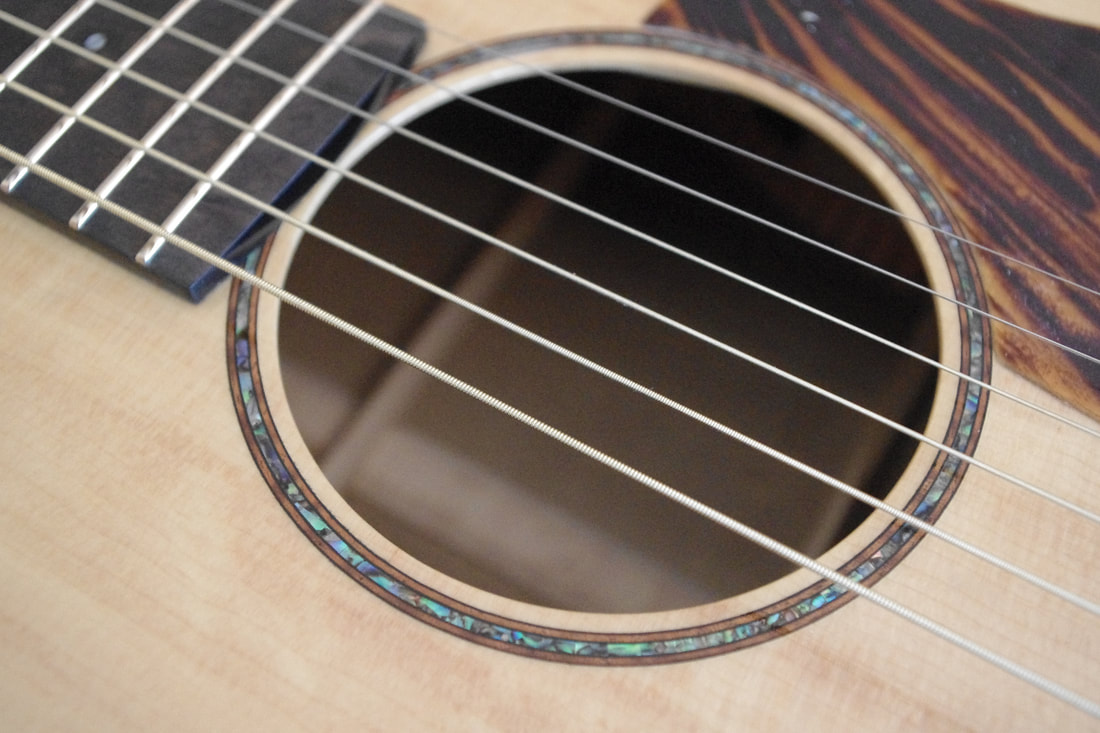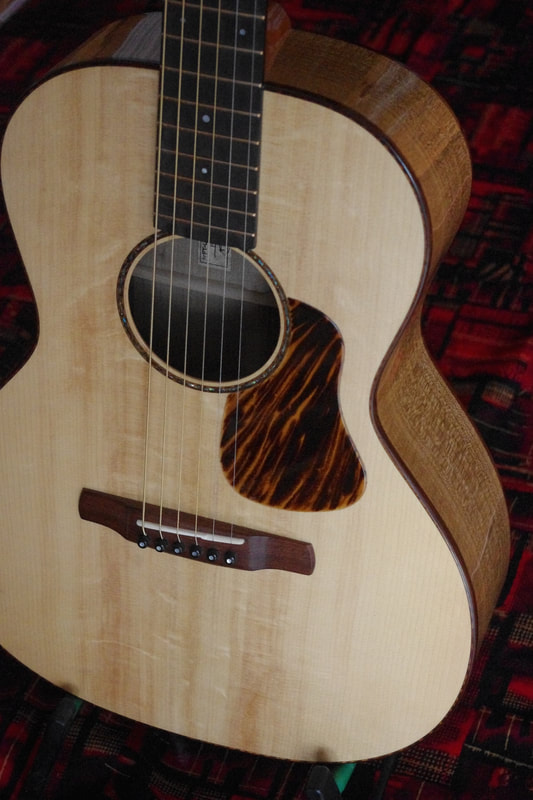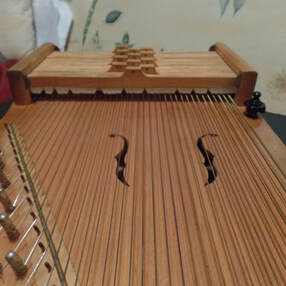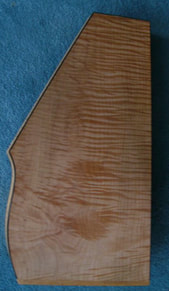My Handmade Axes
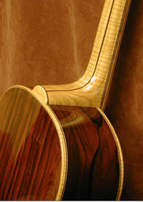
I love fine instruments. Subjectively, I feel I both play and sound better on them, Without question, a good one brings far greater pleasure to me when I pick it up. There is pleasure to be gained in just looking at them. But I am a player, not a collector or investor. Nor am I rich; I use these, I gig with them. This is what they were made to do and if they get a blemish in the process, I'll shed a tear, then get on with business.
I am happy with these and can endorse the sound and workmanship of the luthiers who made them. By the same token, I am well aware that there are many other luthiers out there who are equally good. No one has a corner on the market. And that include "boutique" builders and the better manufacturers.
Note: I have many others, vintage, mostly in the banjo and mandolin families. The ones below were all made within my lifetime, so we can't call them vintage yet (or so I hope).
I am happy with these and can endorse the sound and workmanship of the luthiers who made them. By the same token, I am well aware that there are many other luthiers out there who are equally good. No one has a corner on the market. And that include "boutique" builders and the better manufacturers.
Note: I have many others, vintage, mostly in the banjo and mandolin families. The ones below were all made within my lifetime, so we can't call them vintage yet (or so I hope).
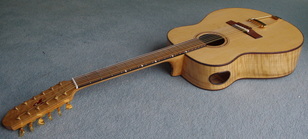
Nikos Apollonio 12 string, 2011
Port Orford Cedar top, Myrtle Back and Sides, Maple neck make this pretty much a US-based show. I feel the POC/Myrtle combination is a good one for a 12 string as it allows a classic 12 string sound without muddiness. Of interest, there is a sound port (Nick's first and we were both happy with it!), and an Ipe (Lapacho) fingerboard and bridge, along with a trapeze. The trapeze allows the strings to exert their pressure on the butt, which is far stronger than the top. In turn, this allows a thinner, more responsive top. Though not in vogue, this is not a new idea; Leadbelly's Stella had the same. There are other interior innovations, one of which allows quick adjustment of the action. Thin artificial pearl around the top and the rosette really sets it off. Fingerboard markers are found only on the edge, allowing them to be seen from both top and side. Plays and sounds like a 12 string should; Nick's made a lot of them.
Port Orford Cedar top, Myrtle Back and Sides, Maple neck make this pretty much a US-based show. I feel the POC/Myrtle combination is a good one for a 12 string as it allows a classic 12 string sound without muddiness. Of interest, there is a sound port (Nick's first and we were both happy with it!), and an Ipe (Lapacho) fingerboard and bridge, along with a trapeze. The trapeze allows the strings to exert their pressure on the butt, which is far stronger than the top. In turn, this allows a thinner, more responsive top. Though not in vogue, this is not a new idea; Leadbelly's Stella had the same. There are other interior innovations, one of which allows quick adjustment of the action. Thin artificial pearl around the top and the rosette really sets it off. Fingerboard markers are found only on the edge, allowing them to be seen from both top and side. Plays and sounds like a 12 string should; Nick's made a lot of them.
______________________________
Ray Choi Autoharp
A new arrival, it plays diatonically in G and C. And F if I am not fussy. Sitka Spruce top and Pau Ferro everything else. Much hand carving, herringbone trim, 2 lock bars, 38 strings, 13 chords.
Ray Choi Autoharp
A new arrival, it plays diatonically in G and C. And F if I am not fussy. Sitka Spruce top and Pau Ferro everything else. Much hand carving, herringbone trim, 2 lock bars, 38 strings, 13 chords.
____________________________
Simon Fay OM, 2022
Sinker Redwood top and Tasmanian Tiger Myrtle Back and sides. Sides have an inside layer of Port Orford Cedar for additional stiffness. Sparkling Paua Abalone purfling, rosette and backstrip w/green accent, Alessi tuners, lower bout soundport, EVO frets,Manzer wedge, 1 13/16" nut, ultra-thin polyurethane finish. No inlay. It has an articulate, clear sound, quite balanced, with a clearly present bass, and volume commensurate with the body size.
Simon Fay OM, 2022
Sinker Redwood top and Tasmanian Tiger Myrtle Back and sides. Sides have an inside layer of Port Orford Cedar for additional stiffness. Sparkling Paua Abalone purfling, rosette and backstrip w/green accent, Alessi tuners, lower bout soundport, EVO frets,Manzer wedge, 1 13/16" nut, ultra-thin polyurethane finish. No inlay. It has an articulate, clear sound, quite balanced, with a clearly present bass, and volume commensurate with the body size.
______________________________________
MJ Franks Resonator, 2018
Made of Australian Blackwood (Black Acacia), both top and back, with an actual gold-plated Beard resonator. It has a full, rich, and woody tone coupled with the hollowness and volume the resonator imparts. Cool. The Lyre plate cover is echoed in the inlay. 13 fret, one-of-a-kind wider body, EVO frets, Grover locking tuners, abalone around the body, tortoise binding, end graft and heel plate. And a mahogany neck. It sounds great for ragtime, but is surprisingly appropriate in many other styles as well.
MJ Franks Resonator, 2018
Made of Australian Blackwood (Black Acacia), both top and back, with an actual gold-plated Beard resonator. It has a full, rich, and woody tone coupled with the hollowness and volume the resonator imparts. Cool. The Lyre plate cover is echoed in the inlay. 13 fret, one-of-a-kind wider body, EVO frets, Grover locking tuners, abalone around the body, tortoise binding, end graft and heel plate. And a mahogany neck. It sounds great for ragtime, but is surprisingly appropriate in many other styles as well.
____________________________
James Goodall jumbo, 2005
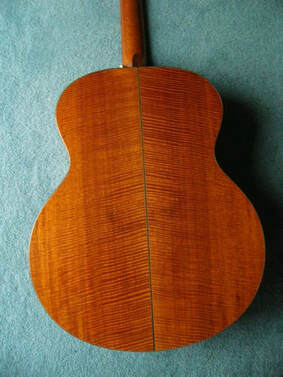
My first Port Orford Cedar top and an amazing fiddleback mahogany back, quilted mahogany sides sides, mahogany neck. The story is that James found this mahogany in a small stash from an old fellow in Arkansas and there was just enough wood for the back. He knows of no other instruments made from this particular wood. Ebony fingerboard and headstock cover. Rosewood bindings. Projects well, good deep sound for a mahogany instrument, equally clear in all registers, adequate sustain - and absolutely impeccable fit and finish. Every time I pick it up, I remark to myself what a fine guitar it is- in every way imaginable. And, what's more, the Port Orford Cedar always gives out this great gingery smell.
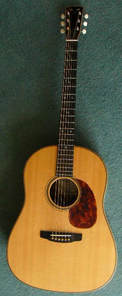
________________________________
Goodall Baritone, Slope D (since sold)
I bought this to use when I knew I'd be ordering a baritone from another luthier. I wanted to learn about them so I got the build right. One of the things I learned was that Goodall makes a very fine baritone. Maybe I should have kept it instead. The sound was more special than the looks. It had a Sitka top and Mahogany back and sides.
Goodall Baritone, Slope D (since sold)
I bought this to use when I knew I'd be ordering a baritone from another luthier. I wanted to learn about them so I got the build right. One of the things I learned was that Goodall makes a very fine baritone. Maybe I should have kept it instead. The sound was more special than the looks. It had a Sitka top and Mahogany back and sides.
___________________________
Goodman J45: Unlike all the others which were carefully planned and considered, this guitar was a spur of the moment purchase. There were two things which tempted me to cross the line: 1) I liked the looks and had been curious how the J45 shape felt to play and 2) the price (I fell for a "good deal"). I do like the looks of course, but it turns out I like the sound even better. It is markedly different than anything else I own, more "open", quite resonant. As the body is less deep than a conventional J45, I did not really learn how they feel to play. It has a Lutz Spruce top and Mahogany body.
Goodman J45: Unlike all the others which were carefully planned and considered, this guitar was a spur of the moment purchase. There were two things which tempted me to cross the line: 1) I liked the looks and had been curious how the J45 shape felt to play and 2) the price (I fell for a "good deal"). I do like the looks of course, but it turns out I like the sound even better. It is markedly different than anything else I own, more "open", quite resonant. As the body is less deep than a conventional J45, I did not really learn how they feel to play. It has a Lutz Spruce top and Mahogany body.
____________________________
Mark Hatcher "Josie" small jumbo, 2017
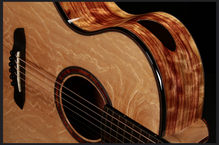 Extreme bearclaw Sitka Spruce
Extreme bearclaw Sitka Spruce
Features EVO frets, a soundport, carved "pillow" headstock and custom orchid inlays. Back and side woods are "bacon" Padauk and the top is an extreme bearclaw Sitka Spruce. Bridge and fretboard are Macassar Ebony and the binding is African Blackwood. It has a big, open and enveloping sound, nicely balanced, an excellent all-around guitar. On the higher frets, it has an etherial, heavenly sound. The sides are layered inside with maple and the neck is a figured maple. Spanish cedar interior parts allow a perfumed smell if you whiff it. Mark made a truly beautiful guitar this time. It has drawn a lot of comments from other guitarists.
____________________________
John Kinnaird 12 fret 000, 2006 (now sold - believe it or not, one of my fingers changed shape)
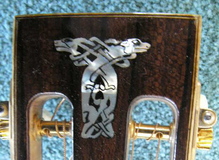
This was my first guitar build and it was so fun planning this one with John. Adirondack top, lots of abalone, D45-kind of stuff, including the intertwined Celtic dogs on the headstock and Celtic knots for position markers. Ziracote back & sides, headstock covers (both sides) and bridge (pyramid style). This Ziricote has more reds than the grays and greens often associated with it; it's fooled some knowledgeable people into thinking it was Brazilian. Ebony fingerboard and curly ash neck and appointments. Except for the ziracote, it is All-American. Come to think of it, that's American as well, just not from the US. Lots of overtones and a depth to it, good sustain, plays easily. Easily the prettiest instrument I may ever own. While well balanced, it is not particularly light. Ziricote and ash are all among the heavier woods.
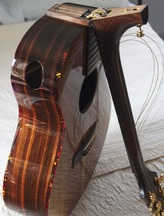
___________________________ Harvey Leach "Arctos" Cremona, 2016
(now sold)
Features EVO frets, a sound port, and the "Voyage-Air" folding neck. The top is an amazing Millenium Sequoia, the back and sides Macassar Ebony with a Lacewood end graft. This is the blackest Macassar I have seen. If I use a flash when photographing it, it looks like normal Macassar, but when viewed normally, you'd think it was black. The neck is Peruvian Walnut with Sapele stripes. 25.625" scale. Warm and subdued, it speaks well in lower tunings and, tuned there, exhibits a sound reminiscent of a resonator guitar. Clear note separation allows it to shine when played faster. Oh yes, the neck folds to make it a full size travel guitar.
(now sold)
Features EVO frets, a sound port, and the "Voyage-Air" folding neck. The top is an amazing Millenium Sequoia, the back and sides Macassar Ebony with a Lacewood end graft. This is the blackest Macassar I have seen. If I use a flash when photographing it, it looks like normal Macassar, but when viewed normally, you'd think it was black. The neck is Peruvian Walnut with Sapele stripes. 25.625" scale. Warm and subdued, it speaks well in lower tunings and, tuned there, exhibits a sound reminiscent of a resonator guitar. Clear note separation allows it to shine when played faster. Oh yes, the neck folds to make it a full size travel guitar.
Sequoias are protected trees and are not normally harvested. The Millenium was a huge tree that sat on a college campus, its center filled with cement. When it finally had to be taken down, it was discovered that the minerals in the cement had given the tree this amazing hue and it's immense size contributed the figure.
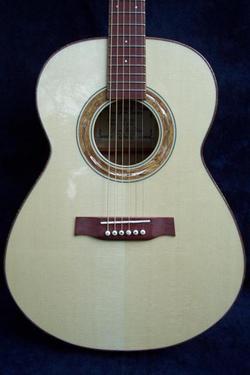
__________________________
David MacCubbin OM, 2007 (since sold)
German Spruce top, Birdseye maple B&S. The sides are laminated (40/1000 each) with Rosewood for additional stiffness. Bloodwood fretboard, tuner knobs and bridge, Shaller tuners w/bloodwood knobs. It's unlike me to purchase an instrument with so "bland" a back and sides, but, let's say, it spoke to me. And it has a different sound than you might expect with maple, very present and open, not strident or harsh, and harmonics that will make you sit up abruptly and take notice. Koa binding, headstock overlay and rosette (abalone added). This has since been passed to another player. I can't keep them all.
David MacCubbin OM, 2007 (since sold)
German Spruce top, Birdseye maple B&S. The sides are laminated (40/1000 each) with Rosewood for additional stiffness. Bloodwood fretboard, tuner knobs and bridge, Shaller tuners w/bloodwood knobs. It's unlike me to purchase an instrument with so "bland" a back and sides, but, let's say, it spoke to me. And it has a different sound than you might expect with maple, very present and open, not strident or harsh, and harmonics that will make you sit up abruptly and take notice. Koa binding, headstock overlay and rosette (abalone added). This has since been passed to another player. I can't keep them all.
____________________________
Roy McAlister Baritone, 2008-2009 (for sale, can't keep them all)
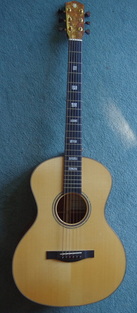
Adirondack top, radically figured Bubinga back and sides, mahogany neck, Brazilian bindings, ebony fingerboard and bridge. The Bubinga is a good choice for a deep-sounding instrument as it allows good tonal separation. Wonderful deep sound, tunes easily B to B, and plays like a dream. There is no break in the register like you often hear. It stays the same all the way up; the notes just get higher without changing timbre. Concert body size is comfortable to hold and I don't feel it suffers projection from having the smaller body. Celtic knot inlays on fingerboard. Fit and finish is superb, as you might expect. Problems developed in 2 spots with finish delaminations, but have been taken care of now.
This is a great guitar for instrumental recording.
This is a great guitar for instrumental recording.
______________________________
Rodrigo Moreira Classical, early 2000's (since sold)
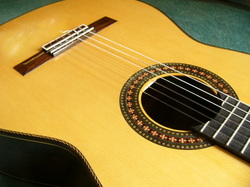
Made with an Alaskan Yellow Cedar top, and a wonderful smell always awaited me when I opened the case. East Indian Rosewood back and sides, mahogany neck. Beautifully appointed and with a HUGE voice that belies it's small size, easily as loud as my jumbo. I never could get used to the wider fingerboard and higher action of a classical guitar, so have played it rarely. It deserves an owner who plays classically, because it's a truly fine instrument. It now has one.
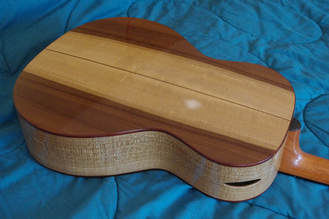
___________________________________
Bruce Sexauer L00(ish), 2014
(for sale, can't keep them all)
You won't find another like it, Southern Magnolia back and sides and an Adirondack Spruce top which exhibits some bearclaw and some pinkish striping, which I happen to like. Koa & Rosewood appointments. Mahogany neck that looks like it came from another guitar, only it didn't. Same for the back and sides - all from the same log though often they appear different. It has a slight Manzer wedge, is 13 frets, and has a soundport and EVO frets. Varnish finished, very thin. The sound is not loud, but is wonderfully balanced. It is also extremely light and very comfortable to play.
Bruce Sexauer L00(ish), 2014
(for sale, can't keep them all)
You won't find another like it, Southern Magnolia back and sides and an Adirondack Spruce top which exhibits some bearclaw and some pinkish striping, which I happen to like. Koa & Rosewood appointments. Mahogany neck that looks like it came from another guitar, only it didn't. Same for the back and sides - all from the same log though often they appear different. It has a slight Manzer wedge, is 13 frets, and has a soundport and EVO frets. Varnish finished, very thin. The sound is not loud, but is wonderfully balanced. It is also extremely light and very comfortable to play.
_____________________________
Keith Young Autoharp, late 1980's
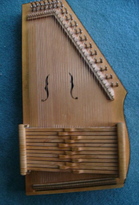
This was the first build I had made. I was unable to find an autoharp that I liked; few few factories make them and those were mostly lower end. So I interviewed a series of luthiers and selected Keith Young. Spruce top and curly Maple back and sides. Reinforced by graphite rods and with removable chord bars, this autoharp looks traditional but is a radical departure in it's set-up. Nearly fully chromatic (there is no G# or D#), some strings are doubled, others aren't. Yet it sounds normal. Plays in 3 keys, 3 octaves. It's received a lot of attention from audiences over the years.
There are 2 guitars I have which are not shown above. Neither has a wood body. One is vintage, a '31 National Steel Duolian. The other is a Blackbird "Lucky 13", a carbon fiber 13 fret smaller guitar with a sound port, the only production CF guitar I am aware of made without a cutaway.
It seems that in my other instruments (a varied series of banjos, a mandolin, and a tiple) I seem to prefer vintage. Probably that means I am not "into" them enough to want something as unique and special as a luthier-made instrument.
It seems that in my other instruments (a varied series of banjos, a mandolin, and a tiple) I seem to prefer vintage. Probably that means I am not "into" them enough to want something as unique and special as a luthier-made instrument.
